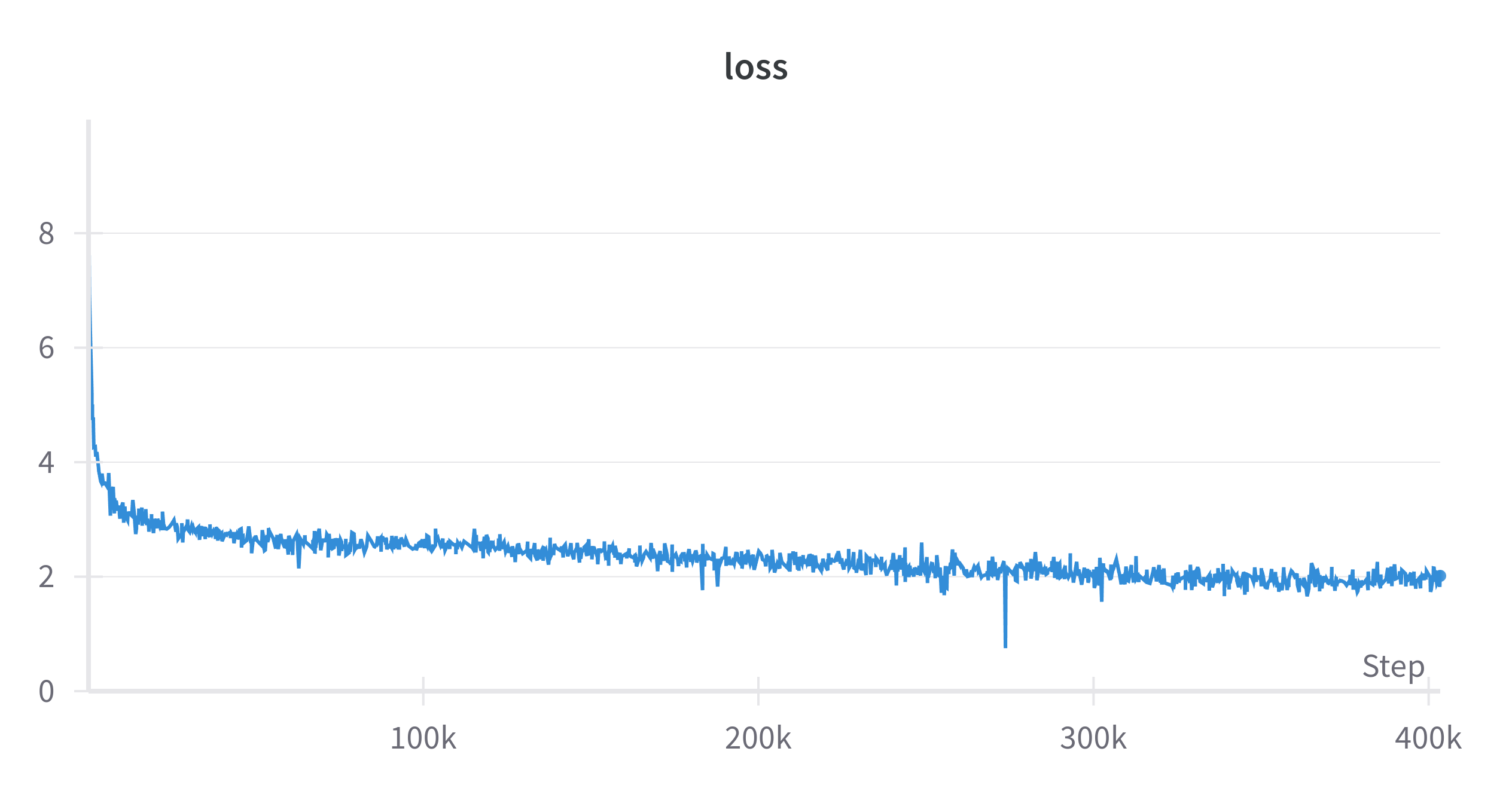xLSTM Model trained on German Wikipedia
Research & development of an xLSTM model trained on German Wikipedia.
The Flair team is currently working on the integration of xLSTM (both LM training and fine-tuning models for downstream tasks).
For pretraining this xLSTM model, we this fork (from Patrick Haller) of the awesome Helibrunna library from Tristan.
Initially, we integrated xLSTM model training into Flair - for more information about this, please refer to the archived flair-old branch of this repository.
Changelog
- 09.09.2024: We discovered a (potential) bug in pretraining code: when using the complete Wikipedia corpus, unfortunately only the first 512 subtoken of each article are used. We implement a grouping-based approach that tokenizes the whole corpus and groups the corpus into 512 subtoken chunks. A re-trained version is available now.
- 29.08.2024: Uploaded re-trained model for 1 epoch over complete German Wikipedia corpus. Training was done with gradient clipping (0.25).
- 28.08.2024: Model training is now done with Helibrunna fork - find it here.
- 10.06.2024: Initial version. xLSTM was trained with Flair library, see this old branch.
Training
The current model was trained with commit a1b3772 from the main branch of the forked Helibrunna repo.
The xlstm library needs to be installed manually - also check that pip3 install Ninja is installed.
The German Wikipedia dump from this repository is used.
The following training configuration is used:
description: "Train a wikipedia xLSTM"
training:
model_name: "german_wikipedia"
batch_size: 10
lr: 6e-4
lr_warmup_steps: 4584
lr_decay_until_steps: "auto"
lr_decay_factor: 0.001
weight_decay: 0.1
amp_precision: bfloat16
weight_precision: float32
enable_mixed_precision: true
num_epochs: 1
output_dir: "./output"
save_every_step: 2000
log_every_step: 10
generate_every_step: 5000
wandb_project: "xlstm"
max_grad_norm: 0.25
# wandb_project: "lovecraftxlstm"
model:
num_blocks: 24
embedding_dim: 768
mlstm_block:
mlstm:
num_heads: 4
slstm_block: {}
slstm_at: []
context_length: 512
dataset:
output_path: "./output/german-wikipedia-dataset"
hugging_face_id: ["stefan-it/dewiki-20230701"]
split: "train" # Also subsetting is possible: "train[:100000]"
shuffle: False
seed: 42
tokenizer:
type: "pretrained"
pretrained_class: "LlamaTokenizer"
pretrained_id: "meta-llama/Llama-2-7b-hf"
The training loss curve can be seen here:
The uploaded model checkpoint is from 403,460 steps (1 epoch over corpus). Training took 1d 42m 52s on a single RTX 4090.
Usage
It is possible to use the model to generate some text:
from transformers import AutoModelForCausalLM, AutoTokenizer
model_name_or_path = "stefan-it/xlstm-german-wikipedia"
model = AutoModelForCausalLM.from_pretrained(model_name_or_path)
tokenizer = AutoTokenizer.from_pretrained(model_name_or_path)
input_ids = tokenizer.encode("Heute ist schönes Wetter in", return_tensors="pt")
output = model.generate(input_ids, max_length=100, temperature=0.7, do_sample=True)
generated_text = tokenizer.decode(output[0], skip_special_tokens=True)
print(generated_text)
Caveats
Notice: this model integration is heavily under development. And in the process of finding good hyper-parameters. Also downstream experiments are coming very soon.
- Downloads last month
- 85

